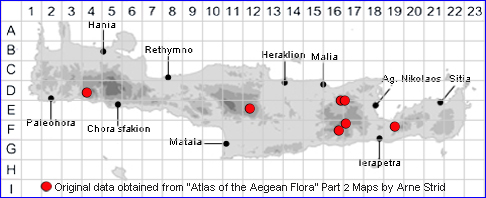
SPECIES DESCRIPTION
TRIFOLIUM PHITOSIANUM
Family and Genus:- See- LEGUMINOSAE/Subgen. LOTOIDES/Sect.
Common Names:- None
Homotypic Synonyms:- None
Meaning:- Trifolium (L) With three leaflets.
Phitosianum (L)
General description:- Very slender, erect, sparingly branched annual.
Stems:-
1) c.10 cm tall glabrescent, procumbent or ascending.
Leaves:-
1) Leaflets, up to 5(-8) mm. subsessile, obcordate to obovate with 4-9 pairs of
lateral veins.
2) Stipules, oblong or ovate.
Flowers:-
1) Heads, long-pedunculate, 2-5(-7)-flowered, lax.
2) Peduncles, capillary.
3) Pedicels, capillary, as long as or longer than the upper limb of the calyx-tube.
4) Calyx tube, very short (c. 0.5 mm).
a) teeth, very unequal, the longest 1.5-2 mm.
5) Corolla, c. 4 mm, pale lilac fading brownish.
a) standard, cymbiform, ffinely and densely denticulate-fimbriate.
6) Ovule, solitary.
7) Style, c. 0.3 mm.
Fruit:-
1) Seeds, ovoid or ellipsoid, non-flattish or only slightly so. hilum, rounded, 1-1.3 x
08-1 mm. surface smooth, medium-lustrous, yellow or pale-brown (older Seeds)
Key features:-
1) Corolla, 2-3(4-) mm.
2) Fruiting pedicels, 1-1½ times as long as the upper limb of the calyx-tube.
Habitat:- Dry, rocky limestone slopes and dolines with open woodland of
Cupressus sempen/irens, Quercus coccifera and Pinus halepensis subsp. brulia,
700-1300 m.
Distribution:- Endemic to Crete; a recently described member resembling T.
micranthum.
Flowering time:- April-May.
Photos:- None currently available
